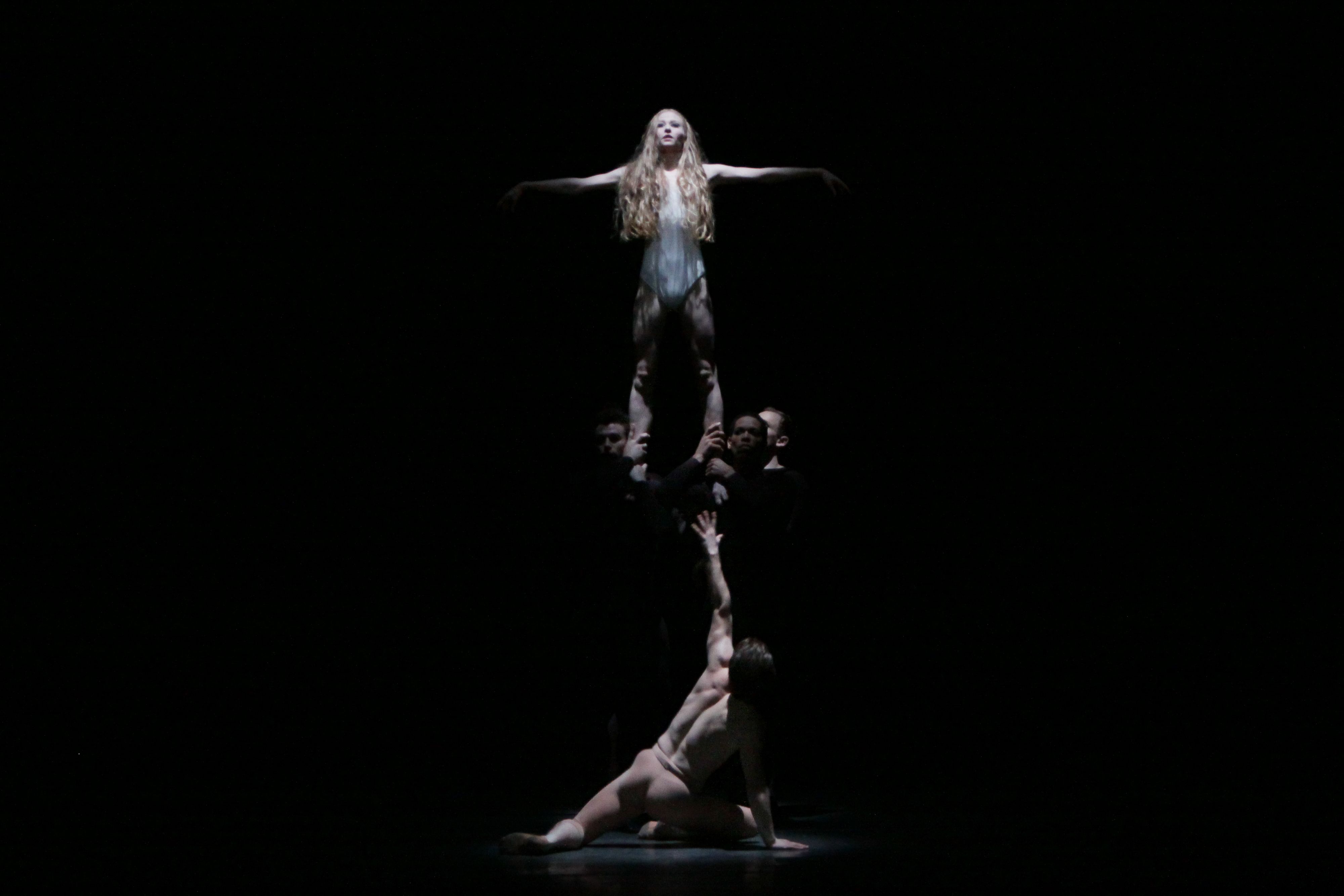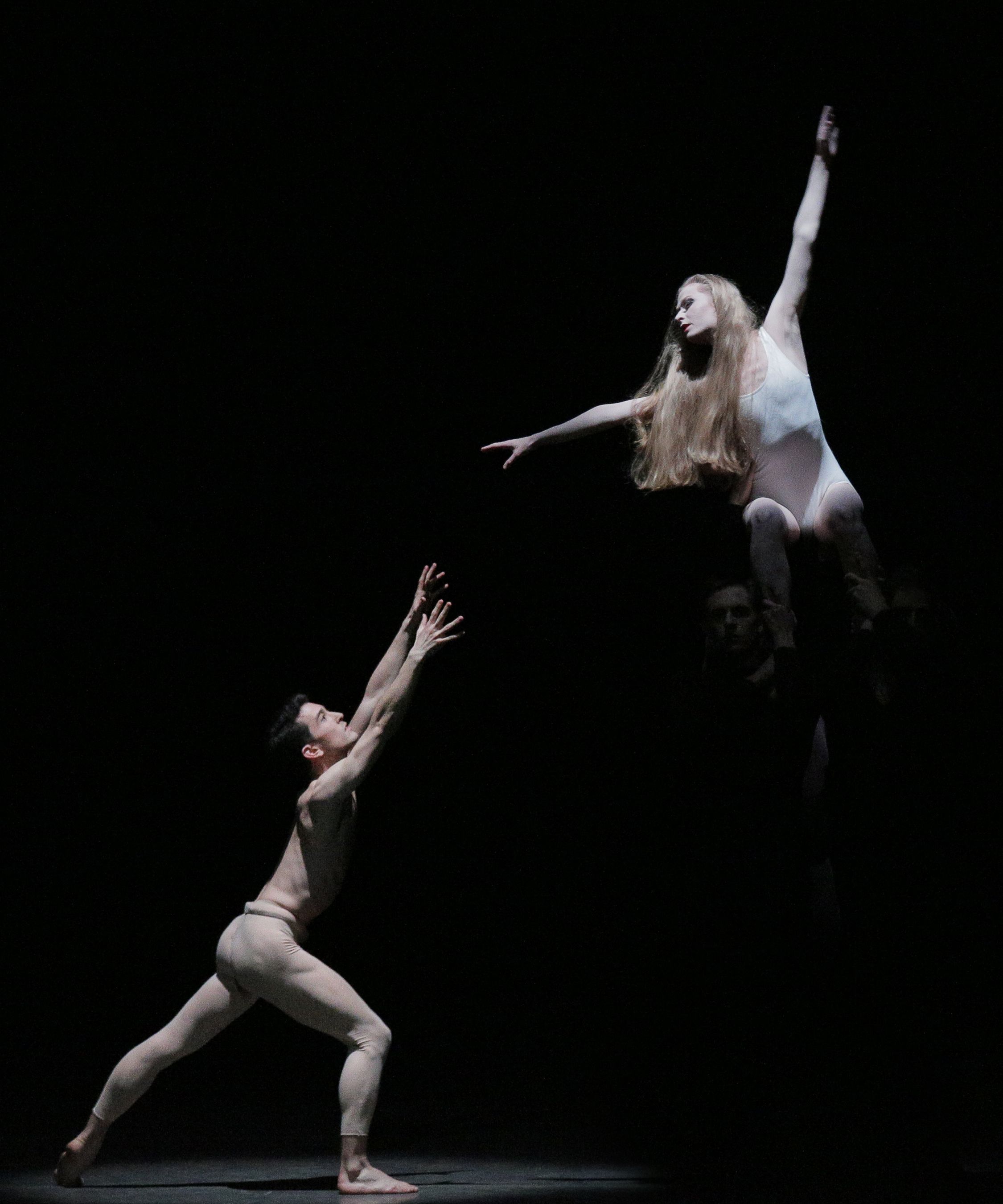
A Necessary Shock
Spotlight on The Unanswered Question
, January 20, 2022
At the time of its premiere in 1954, George Balanchine’s Ivesiana represented another of his signature creative ruptures, a bold intervention in the development of the particularly American iteration of ballet he’d been pursuing since first establishing the School of American Ballet 20 years earlier. Though 1946’s The Four Temperaments, set to Paul Hindemith’s harmonically complex score, lay some groundwork for Balanchine’s interest in combining challenging music with choreographic innovations, his decision to use selections from Charles Ives’ then-underknown oeuvre—and the movement he paired with it—was relatively unprecedented for the young Company, and its audience.
The pieces that comprise Ivesiana’s score (originally Central Park in the Dark, Hallowe’en, The Unanswered Question, Over the Pavements, “In the Inn,” and “In the Night,” though the 2nd and 4th movements were eventually removed) were composed in the early 1900s, amidst the height of Ives’ creativity. Born and raised in Danbury, Connecticut, Ives’ father was an Army bandleader who encouraged his son’s teenage career as a church organist and composer. From those earliest efforts and throughout his short tenure as a composer, Ives’ music was uniquely challenging, incorporating rhythmic and harmonic complexities as well as a wide variety of familiar tunes and elements of chance in an experimental mode with no contemporary comparison; as composer Arnold Schoenberg wrote, admiringly, “The ear is jarred by quarter tones, amelodic figurations, microtonalities, wild leaps, brand-new chordal relationships, and a concept of counterpoint that seemed to break every rule in the book.”

The second movement of Ivesiana, The Unanswered Question, received particular attention in 1954, and the music is one of the more regularly anthologized of Ives’ works. The piece’s alluring title, in keeping with the intrigues of its approximately six-minute musical structure, have led critics and fans of the composer to speculate on its meaning—speculations that serve to enrich and complicate the experience of Balanchine’s corresponding choreography.
One theory claims that Ralph Waldo Emerson’s poem “The Sphinx” served as inspiration; Ives had written his senior thesis at Yale on the poet, and shortly after writing The Unanswered Question, Ives would go on to compose his Emerson Overture. Published in 1841, “The Sphinx” records an exchange between the “drowsy” Egyptian statuesse and a “cheerful” poet, in which she asks, “Who taught thee me to name?”
“Thou art the unanswered question;
Couldst see thy proper eye,
Alway it asketh, asketh;
And each answer is a lie.
Not unlike Ives’ music and Balanchine’s choreography, “The Sphinx” continues to inspire controversy among readers looking to define what the players and their conversation symbolize. Emerson himself responded, though not without introducing additional mystery, in his personal notes of 1959: “But if the mind live only in particulars, and see only differences… then the world addresses to this mind a question it cannot answer, and each new fact tears it in pieces, and it is vanquished by the distracting variety.” Perhaps the poet is “vanquished” by the passions and distractions he declaims, while the Sphinx’s placid gaze makes her a witness to the ages, in which the sound and fury of daily life represent a fruitless “question” washed over by the waves of epochal time.

But the hunt for “The Invisible Answer” undertaken by the flutes and other human beings becomes gradually more active, faster and louder… This part… is played in somewhat of an impromptu way. … “The Fighting Answers,” as the time goes on, and after a “secret conference,” seem to realize a futility, and begin to mock “The Question”—the strife is over for the moment. After they disappear, “The Question” is asked for the last time, and “The Silences” are heard beyond in “Undisturbed Solitude.”
A worldview approach to the mystery of “The Sphinx” emerges, in which the “Unanswered Question” is both existential and fruitless. Though Ives does seem to be describing an exchange at a similar register to that of the poem, he never explicitly noted such a connection.
Balanchine seems to close the interpretive loop, writing in his Complete Stories of the Great Ballets that this movement presents “a girl all-knowing like a sphinx to whom a man might turn.” This is visually represented by a lone male, dancing in time with the trumpet, who addresses himself with increasingly despondent supplications to a lone woman, held aloft by four “invisible” dancers and moved only by their volition—not unlike the Gizan statue, immobile but for the work of the wind through the desert sands.
Balanchine had initially declared Ives’ music too “complex” to serve as a ballet score, but after hearing it performed under the direction of then-NYCB Orchestra conductor Leon Barzin, the choreographer was won over, writing that its rhythmic challenges provided “the shock necessary for a new point of view.” Originating dancer Allegra Kent writes of learning The Unanswered Question’s iconoclastic choreography, including a dramatic moment in which she is seemingly dropped by her hidden cortege, that “Balanchine liked to startle the audience, and as it turned out, so did I.”
The shock of the ballet’s innovations were captured most movingly by critic Edwin Denby, who wrote, in 1954, "Ivesiana for a critic is as remarkable a novelty as Four Temperaments was...
Ballets such as both of these are an active part of intellectual life in the United States; they are, it seems to me, among its triumphs. In any case, they are a fight. That is why the spirit, the vitality of the New York City company depend upon dancing them.
The work premiered alongside Balanchine’s Western Symphony—a juxtaposition of ballets that represent effective and relatively unexpected evocations of America; though wildly different in their approaches, they are emblematic of Balanchine’s particular skill at distillation and unique creation.



